Read Our
Winery Blog
Blog
This is your blog page, add intro text before through the content management tools or add blog posts through the blogging tools:
The Role of the Wine Glass
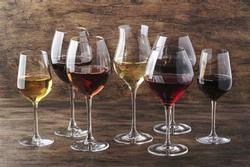
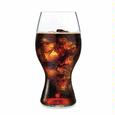
 Stylized glassware is not without its merits, designer glassware is pretty, and there is no doubt that the elegant lines and spacious globes are attractive structures unto themselves, and as such present a magnificent frame for a multitude of elixirs. They feel refined, sparkle in the light, and are downright striking seductive vessels for enhancing the experience.
Stylized glassware is not without its merits, designer glassware is pretty, and there is no doubt that the elegant lines and spacious globes are attractive structures unto themselves, and as such present a magnificent frame for a multitude of elixirs. They feel refined, sparkle in the light, and are downright striking seductive vessels for enhancing the experience.
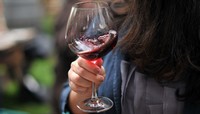 Additionally, the glassware is engineered in a multitude of shapes and designs that undeniably enhance the diffusion of the wine which makes inhaling the aromatics easier and more concentrated. Some will even argue that some of the glass designs may occasionally direct the initial impact of the contents of the glass preferentially to specific areas of taste buds. There are even classes where you will be instructed to taste the same wine from different glasses and experience the "vast tangible difference".
Additionally, the glassware is engineered in a multitude of shapes and designs that undeniably enhance the diffusion of the wine which makes inhaling the aromatics easier and more concentrated. Some will even argue that some of the glass designs may occasionally direct the initial impact of the contents of the glass preferentially to specific areas of taste buds. There are even classes where you will be instructed to taste the same wine from different glasses and experience the "vast tangible difference".
The fact of the matter is that when a normal person takes a sip of wine, it cascades all over the tongue and palate yielding a multi faceted experience that is a collaboration of all tangible tasting experiences to yield "a flavor". This is where the curated sale of designer glassware starts to weave its web.
One of the most powerful aspects of the tasting experience is the power of suggestion, and if the tasting experience is liberally sprinkled with subliminal directions of what wonders will be discovered it is almost like being handed a treasure map. If someone during a sensory experience suggests that you look for a particular sensation, they are urging you down a narrow path where you will be rewarded by being right. For example, if someone asks you to imagine a strawberry, and if you have ever had a strawberry, your memory pathways draw on the memory of experiencing a strawberry, and at that moment you will have a phantom memory experience of that strawberry. Tie this to what you have been invited to experience, and it is not too much of a stretch to say that strawberry will become a part of your present sensory experience.

Starting to get the picture? If you want to believe that the information you are being supplied with is accurate, it will have a far greater impact on your conclusion than the shape of the vessel. Here is where the glassware design argument starts to crumble.
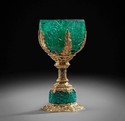
 Provided that your "vessel" is made of a non reactive substance (glass, ceramic cup, titanium etc.) it will not change the true flavor or bouquet of the wine period. The shape and size of the glass may affect how the released aromas may become focused or concentrated for easier detection, but the bouquet remains the same. For instance, take the glass off a (clean) hurricane lamp, place it over a teacup of wine and it will help you concentrate the emanating aroma, but the actual aroma remains the same. If you pour the same wine to the brim in a shot glass, the bouquet does not disappear, it remains the same, it just becomes a little harder to detect.
Provided that your "vessel" is made of a non reactive substance (glass, ceramic cup, titanium etc.) it will not change the true flavor or bouquet of the wine period. The shape and size of the glass may affect how the released aromas may become focused or concentrated for easier detection, but the bouquet remains the same. For instance, take the glass off a (clean) hurricane lamp, place it over a teacup of wine and it will help you concentrate the emanating aroma, but the actual aroma remains the same. If you pour the same wine to the brim in a shot glass, the bouquet does not disappear, it remains the same, it just becomes a little harder to detect.
Allowing a wine to "breathe" will in time change the aromas of the wine as it interacts with oxygen, sometimes for better sometimes for worse. Pouring a wine into a large globe of a glass and swirling it steadily will allow a wine to "breathe" more rapidly, and while doing so release more of the aromas into the globe so when you sniff the glass, you inhale more particles to stimulate your senses. Pour that same wine into a classic rim porcelain soup bowl, it will breathe more quickly but the aromas will dissipate at the flutter of a butterfly wing.
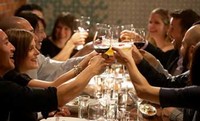 One of the most overlooked aspects of wine enjoyment is that it should not be an object lesson in sensory dissection, but a symphony of sensations that is reater than the sum of its parts. The pleasure of enjoying wine is a complex combination of factors that are unique to every imbiber and their current surroundings, it engages the sense of smell, taste, touch and vision.
One of the most overlooked aspects of wine enjoyment is that it should not be an object lesson in sensory dissection, but a symphony of sensations that is reater than the sum of its parts. The pleasure of enjoying wine is a complex combination of factors that are unique to every imbiber and their current surroundings, it engages the sense of smell, taste, touch and vision.
Bottom line, engage as many senses as you choose in the enjoyment of wine, and you will enhance the decadent pleasure of your wine experience. But remember, the pleasure of wine should be an experience, not a flavor.
"Tasting" Wine
“Tasting” Wine
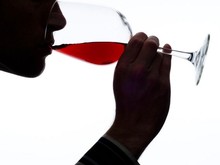 What is it about wines that allows them to be so fascinatingly complex? When it comes to consumable products there are few that receive the attention and analysis that wine does. From the beginner to the master sommelier, much of the fascination of wine tasting lies in the discovery of unique flavor profiles that are often specific to the person on the receiving end of that glass of fine wine. Before we meander down the path of complexity, it is important to note how complexity is experienced.
What is it about wines that allows them to be so fascinatingly complex? When it comes to consumable products there are few that receive the attention and analysis that wine does. From the beginner to the master sommelier, much of the fascination of wine tasting lies in the discovery of unique flavor profiles that are often specific to the person on the receiving end of that glass of fine wine. Before we meander down the path of complexity, it is important to note how complexity is experienced.

There are a small percentage of the population that are on the low end on the number of taste-buds spectrum. They are challenged more greatly because not only do they have fewer receptors to capture the sensory experience, but they by the same nature have fewer receptors to detect unpleasant elements. In general, this category finds most things taste fine, and need to be coaxed into searching for complexity, but with training tasting skills can be honed and refined.
 The average person is the ideal consumer. These are the tasters that can study, and practice, practice, practice in order to fully appreciate all the glorious flavors and sensations that wine has to offer. Here lie the true aficionados, constantly searching for the next great wine that will create lasting memories for them, and willing to pursue that quest until the end of time. They are able to identify flaws, yet understand the difference between something being bad and something they do not like.
The average person is the ideal consumer. These are the tasters that can study, and practice, practice, practice in order to fully appreciate all the glorious flavors and sensations that wine has to offer. Here lie the true aficionados, constantly searching for the next great wine that will create lasting memories for them, and willing to pursue that quest until the end of time. They are able to identify flaws, yet understand the difference between something being bad and something they do not like.
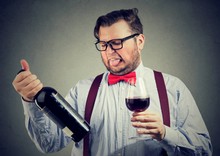 Then there are the “cursed”, the hyper tasters. These are the poor souls that have more taste buds than the rest of us, and those taste buds are very sensitive. Left untrained, these are the most critical of tasters and the bane of winemakers. To them they can either love something or hate something uncompromisingly. They may discover the most exquisite flavor of Wiśnia Nadwiślanka (Eastern European cherry) and find it divine, but then the slightest hint of Havana cigar tobacco triggers a negative response they are unable to escape and so they dislike the wine. As there is simply no such thing as the “perfect wine” they wind up identifying the faults more than they enjoy the glories.
Then there are the “cursed”, the hyper tasters. These are the poor souls that have more taste buds than the rest of us, and those taste buds are very sensitive. Left untrained, these are the most critical of tasters and the bane of winemakers. To them they can either love something or hate something uncompromisingly. They may discover the most exquisite flavor of Wiśnia Nadwiślanka (Eastern European cherry) and find it divine, but then the slightest hint of Havana cigar tobacco triggers a negative response they are unable to escape and so they dislike the wine. As there is simply no such thing as the “perfect wine” they wind up identifying the faults more than they enjoy the glories.
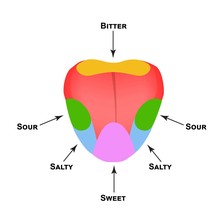 In the simplest of terms there are three primary tasting zones that come into play when tasting wine, sweet which is on the front or tip of the tongue, sour which runs both sides of the tongue, and bitter which is at the base or back of the tongue. Flavors are experienced all across the tongue, but they tend to be perceived or more focused in these general areas.
In the simplest of terms there are three primary tasting zones that come into play when tasting wine, sweet which is on the front or tip of the tongue, sour which runs both sides of the tongue, and bitter which is at the base or back of the tongue. Flavors are experienced all across the tongue, but they tend to be perceived or more focused in these general areas.
The aroma of the wine can often impact the perception of these flavors, as the neural pathways that transmit information to identify smell and taste are deployed simultaneously. If something smells like rose petals, pineapple and vanilla, our receptors are primed to perceive a degree of sweetness, whereas if something smells like grapefruit, lemongrass and rhubarb they will expect tart. Once these messages have been sent to the brain, it then computes which flavors it can identify and looks for flavor memories to pair them with.
 The brain being a complex organ, it also has its weaknesses. The power of suggestion can play tricks on the unwary. Think about the process, if someone mentions that a wine has hints of a relatively common flavor such as lemon, the only way to process that information is for the brain to search for “lemon” and then try to translate that memory into real time for you to identify. If you think hard enough about what lemon smells and tastes like, can you smell or taste it? Just look at the picture and imagine you are biting into the lemon, did your mouth water? The power of suggestion has planted that seed, and you are predisposed to agree with the information given. It is not universal, but it is remarkable how often this works.
The brain being a complex organ, it also has its weaknesses. The power of suggestion can play tricks on the unwary. Think about the process, if someone mentions that a wine has hints of a relatively common flavor such as lemon, the only way to process that information is for the brain to search for “lemon” and then try to translate that memory into real time for you to identify. If you think hard enough about what lemon smells and tastes like, can you smell or taste it? Just look at the picture and imagine you are biting into the lemon, did your mouth water? The power of suggestion has planted that seed, and you are predisposed to agree with the information given. It is not universal, but it is remarkable how often this works.
Now here is where things get interesting. We (excluding some exceptions) are not computers focused on algorithms, or machines with a singular purpose. We are complex organisms that can formulate experiences based on purpose. Rather than simply finding one flavor and focusing on it, we are able to take these multiple flavor compounds and create a kaleidoscope of flavors so not only do we taste the individual components, but the symphony they create together. Then we take that flavor creation and convert it into an emotional experience from which we can derive pleasure, and isn’t that what we really want? Ask yourself this question, is it more important to enjoy the wine or to be able to identify the flavor?
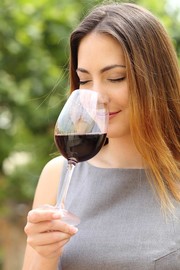 So, what should you take away from this? In my humble opinion the start and finish of a tasting should be all about the pleasure of the experience, and the ability to dissect and articulate the details of that experience should always be secondary. If you want to develop your senses to better appreciate wine, then like any athletic endeavor practice, practice, practice. Amass an encyclopedia of flavor identities and train yourself to be able to recognize them again and again. Try not to be a wine critic, they are the people that are looking for flaws in wine. Be a wine lover, able to identify the flaws in a wine while looking for the finer qualities and enjoying them.
So, what should you take away from this? In my humble opinion the start and finish of a tasting should be all about the pleasure of the experience, and the ability to dissect and articulate the details of that experience should always be secondary. If you want to develop your senses to better appreciate wine, then like any athletic endeavor practice, practice, practice. Amass an encyclopedia of flavor identities and train yourself to be able to recognize them again and again. Try not to be a wine critic, they are the people that are looking for flaws in wine. Be a wine lover, able to identify the flaws in a wine while looking for the finer qualities and enjoying them.
In the end, appreciating wine is like appreciating art, it is in the eye (or the palate) of the beholder. Appreciating wine is knowing what the ideal version of that wine would be and understanding where your current wine falls in that spectrum, but enjoying wine is a far more intricate and complex endeavor that requires an involvement in the situation that goes far beyond the juice in the glass.